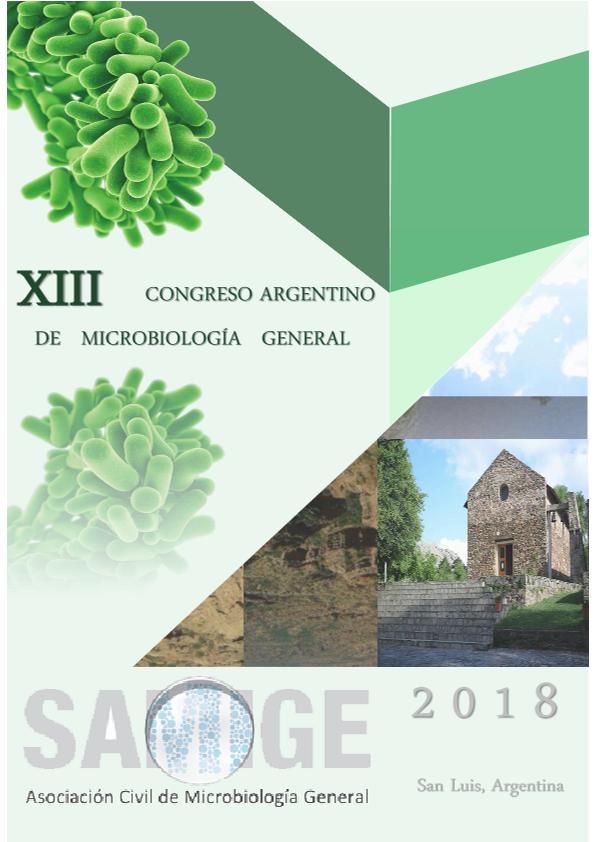Mostrar el registro sencillo del ítem
dc.contributor.author
del Gobbo, Luciana Melisa

dc.contributor.author
Rulli, Macarena María

dc.contributor.author
Villegas, Liliana Beatriz

dc.contributor.author
Colin, Veronica Leticia

dc.date.available
2023-02-10T14:00:02Z
dc.date.issued
2018
dc.identifier.citation
Degradation of sugarcane vinasse by an autochthonous fungus: Molecular identification; XIII Congreso Argentino de Microbiologia General; San Luis; Argentina; 2018; 1-4
dc.identifier.uri
http://hdl.handle.net/11336/187613
dc.description.abstract
Various fungus-based processes can be applied to degrade sugarcane vinasse, an acid effluent (pH=3.5−5.0) from sugar-alcohol industry which contains a high chemical oxygen demand (COD) and biochemical oxygen demand (BOD). Previous studies demonstrated the potential of a native fungus from the province of Tucumán (strain V1) to degrade a vinasse sample. In the present study, the molecular identification of this strain was carried out. In addition, it was evaluated the effectiveness of the microbial treatment conducted during 15 d. Mycelium in the exponential growth phase was harvested by centrifugation and total DNA extraction was performed using DNA Kit, MOBIO. Amplification of the rDNA ITS1-5.8S-ITS2 regions was carried out using ITS1 and ITS4 primers and 18S rDNA sequences were compared with partial 18S rDNA sequences published in the GenBank using the BLAST tool from the National Center for Biotechnology Information (NCBI). Finally, a phylogenetic tree was constructed using the neighbor-joining method. Regarding the microbiological treatment, 200 mL of vinasse were inoculated with fungus spores at a final concentration of 1×106UFC/mL, and was incubated at 30ºC (150 rpm) for 15 d. Vinasse samples without inoculation were used as abiotic controls (AC). Growth kinetics (measured as biomass production), pH changes, and the removal percentages of COD and BOD was determined each 72 h in the microbiologically treated vinasse (TV) and in AC, by using standard methods for the examination of wastewater. The fungus strain was identified as Aspergillussp. V1 and it was closely related to Aspergillus terreus ATCC MYA-4898 (99%).As expected, in the AC no was detected any significant growth until the end of the assay. For TV it was observed the maximum growth at 9th d of cultivation (biomass higher than 5 g/l). The TV for 3 d did not show a significant increase in the pH with respect to AC, which remained unchanged throughout the entire experiment (pH = 4.1). However, at 6thd of incubation, pH was significantly increased until a value close to neutral (6.7 ± 0.5). At 12thd of cultivation, it was detected the maximum COD and BOD removal, with percentages of 59% and 89%, respectively. At that point in time, only a 10% and a 30% was removed from AC. Based on these results, a removal of COD and BOD of 49% and 59%, respectively, can be attributed to the metabolism of Aspergillus sp. V1. This could involve a significant reduction in the toxicity of the effluent mediated by the action of this strain.
dc.format
application/pdf
dc.language.iso
eng
dc.publisher
Sociedad Argentina de Microbiología General
dc.rights
info:eu-repo/semantics/openAccess
dc.rights.uri
https://creativecommons.org/licenses/by-nc-sa/2.5/ar/
dc.subject
AUTOCHTHONOUS FUNGUS
dc.subject
BIODEGRADATION
dc.subject
SUGARCANE VINASSE
dc.subject
Aspergillus sp, V1
dc.subject.classification
Otras Ingeniería del Medio Ambiente

dc.subject.classification
Ingeniería del Medio Ambiente

dc.subject.classification
INGENIERÍAS Y TECNOLOGÍAS

dc.title
Degradation of sugarcane vinasse by an autochthonous fungus: Molecular identification
dc.type
info:eu-repo/semantics/publishedVersion
dc.type
info:eu-repo/semantics/conferenceObject
dc.type
info:ar-repo/semantics/documento de conferencia
dc.date.updated
2023-01-31T13:58:45Z
dc.journal.pagination
1-4
dc.journal.pais
Argentina

dc.journal.ciudad
San Luis
dc.description.fil
Fil: del Gobbo, Luciana Melisa. Universidad Nacional de Tucumán. Facultad de Bioquímica, Química y Farmacia; Argentina. Consejo Nacional de Investigaciones Científicas y Técnicas; Argentina
dc.description.fil
Fil: Rulli, Macarena María. Consejo Nacional de Investigaciones Científicas y Técnicas. Centro Científico Tecnológico Conicet - Tucumán. Planta Piloto de Procesos Industriales Microbiológicos; Argentina
dc.description.fil
Fil: Villegas, Liliana Beatriz. Consejo Nacional de Investigaciones Científicas y Técnicas. Centro Científico Tecnológico Conicet - San Luis. Instituto de Química de San Luis. Universidad Nacional de San Luis. Facultad de Química, Bioquímica y Farmacia. Instituto de Química de San Luis; Argentina
dc.description.fil
Fil: Colin, Veronica Leticia. Consejo Nacional de Investigaciones Científicas y Técnicas. Centro Científico Tecnológico Conicet - Tucumán. Planta Piloto de Procesos Industriales Microbiológicos; Argentina
dc.relation.alternativeid
info:eu-repo/semantics/altIdentifier/url/http://www.samige.org.ar/admin/news/files/123-Libro%20samige%202018%20v3.pdf
dc.conicet.rol
Autor

dc.conicet.rol
Autor

dc.conicet.rol
Autor

dc.conicet.rol
Autor

dc.coverage
Nacional
dc.type.subtype
Congreso
dc.description.nombreEvento
XIII Congreso Argentino de Microbiologia General
dc.date.evento
2018-08-08
dc.description.ciudadEvento
San Luis
dc.description.paisEvento
Argentina

dc.type.publicacion
Book
dc.description.institucionOrganizadora
Universidad Nacional de San Luis
dc.description.institucionOrganizadora
Sociedad Argentina de Microbiología General
dc.source.libro
Libro de Resúmenes del XIII Congreso Argentino de Microbiologia General
dc.date.eventoHasta
2018-08-10
dc.type
Congreso
Archivos asociados
